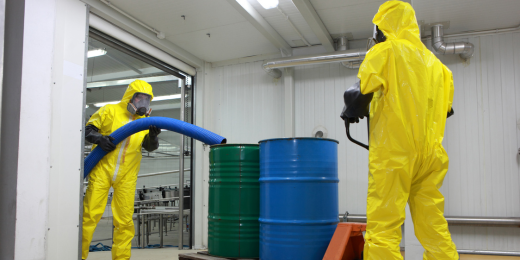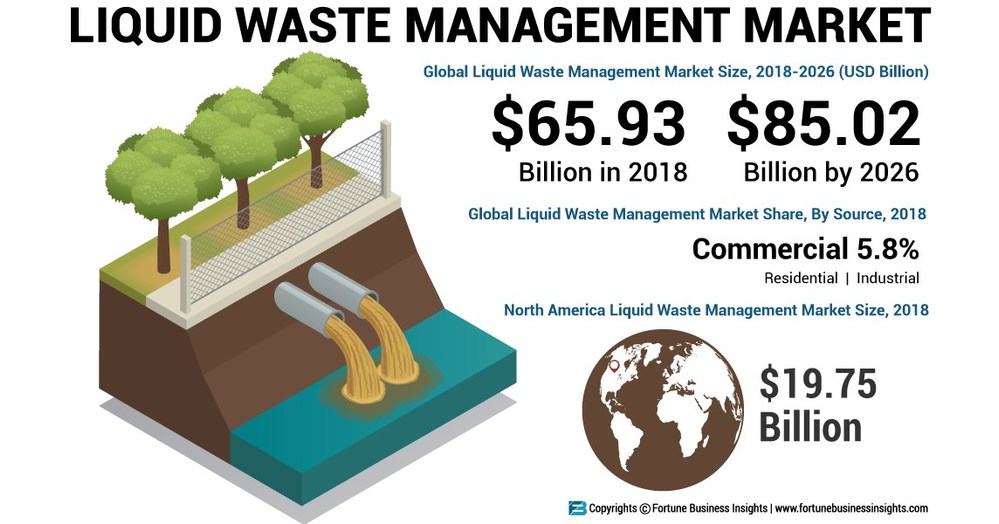Rumored Buzz on Reclaim Waste
Table of ContentsHow Reclaim Waste can Save You Time, Stress, and Money.Reclaim Waste Can Be Fun For AnyoneOur Reclaim Waste IdeasReclaim Waste Fundamentals ExplainedThe Only Guide for Reclaim Waste
Check out the kinds, occurrences, and kinds of liquid waste. Residential sewer waste describes the waste and products from a property sewage-disposal tank. This sort of waste is produced by human beings in residences, institutions, and other buildings. This only consists of septic systems that have a drainpipe field. The proper administration and disposal of residential sewage waste require liquid waste to be moved to a sewer therapy plant where the correct techniques and equipment are put on purify and throw away waste.
Industrial waste commonly includes potential threats, such as combustible materials or a combination of fluid and solid waste items, and calls for an advanced and thorough disposal process. The disposal of industrial waste commonly entails the filtering of waste prior to transportation to guarantee secure and appropriate disposal. Industrial waste is created from results and runoff of commercial processes and production.
This type of waste can not make use of the exact same sewage management transportation or procedures as septic or industrial liquids. The hazardous waste management process requires the examination and testing of liquid waste prior to it undertakes the disposal process (liquid waste disposal). Overflow waste is the fluid waste that comes from runoff and excess stormwater in extremely inhabited locations or cities
Overflow waste can create contamination and flooding if not handled correctly. Ensuring proper waste administration can prevent catastrophes and reduce ecological damage.
Facts About Reclaim Waste Revealed
Get in touch with PROS Services today to discover our waste administration and disposal services and the correct means to look after the liquid waste you create.
(http://peterjackson.mee.nu/where_i_work#c2441)Do you understand what takes place to your water when you disengage, flush the commode or drain the cleaning machine? No? Well, it's worth recognizing. This so-called 'wastewater' is not just an important resource but, after treatment, will be released to our land, waterways or the ocean. Made use of water from toilets, showers, baths, cooking area sinks, laundries and commercial procedures is known as wastewater.

water utilized to cool equipment or tidy plant and tools). Stormwater, a type of wastewater, is runoff that streams from agricultural and urban get redirected here areas such as roofing systems, parks, yards, roads, paths and seamless gutters into stormwater drains, after rainfall. Stormwater moves unattended directly to regional creeks or rivers, at some point reaching the sea.
More About Reclaim Waste
In Queensland, a lot of wastewater is treated at sewage therapy plants. Wastewater is delivered from residential or industrial sites via a system of drains and pump terminals, referred to as sewage reticulation, to a sewer treatment plant. City governments build, keep and run most sewage treatment plants. Operators are licensed under the Environmental Protection Act 1994 to release treated wastewater at an acceptable ecological requirement right into rivers.
The Department of Natural Resources suggests regional federal governments about managing, operating and maintaining sewage systems and treatment plants. In unsewered locations, city governments might call for householders to install individual or house sewage treatment systems to deal with residential wastewater from commodes, kitchen areas, restrooms and washings. The Division of Natural Resources authorizes the usage of house systems when they are verified to be effective.
The majority of stormwater receives no therapy. In some new subdivisions, therapy of some stormwater to remove clutter, sand and crushed rock has actually begun making use of gross contaminant catches. Wastewater treatment happens in 4 phases: Gets rid of strong issue. Larger solids, such as plastics and various other items wrongly discharged to drains, are gotten rid of when wastewater is travelled through displays.
Wastewater after that moves into large storage tanks where solids resolve and are gotten rid of as sludge. Grease and residue are skimmed from the surface. Uses tiny living organisms recognizes as micro-organisms to damage down and get rid of remaining dissolved wastes and great bits. Micro-organisms and wastes are integrated in the sludge. Eliminates nitrogen and phosphorus nutrients that can create algal flowers in our waterways and intimidate water life.
The Only Guide for Reclaim Waste
Nutrient elimination is not available at all sewer treatment plants because it requires expensive specialised devices. Clear liquid effluent created after therapy might still consist of disease-causing micro-organisms - liquid waste removal melbourne.

Many wastewater moves right into the sewerage system. Under the Act, neighborhood federal governments administer authorizations and permits for environmentally appropriate activities (Ages) involving wastewater releases that could have a neighborhood impact.
Little Known Facts About Reclaim Waste.
Or else, examples are taken for lab analysis. Commonly several tests are required to develop the levels of each of the various contaminants such as oils, hefty steels and chemicals in water. Surveillance gives valid info concerning water top quality and can validate that licence problems are being fulfilled. The information obtained through monitoring gives the basis for making water quality choices.